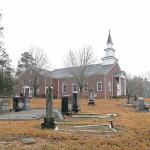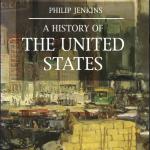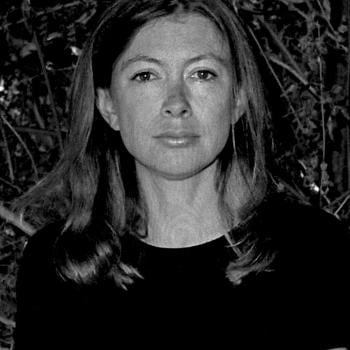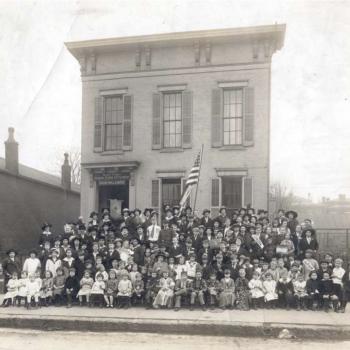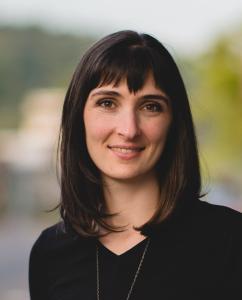
I am delighted to welcome Lucy S. R. Austen to the Anxious Bench to talk about her new biography, Elisabeth Elliot: A Life. Austen is a writer, editor, and teacher who has spent over a decade studying source materials on Elisabeth Elliot. She lives in the beautiful Pacific Northwest with her husband and children.
Andrea Turpin: For readers who are not familiar with Elisabeth Elliot—or perhaps are familiar with only one aspect of her—how would you briefly summarize her life and significance?
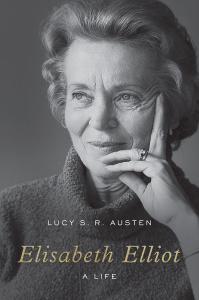 Lucy Austen: Elisabeth Elliot came of age as World War II was ending, and after graduating from Wheaton college she was one of many young people who pursued a career as a foreign missionary in the surge in missions interest that followed the war. She became internationally known in 1956, when her young husband Jim and four of their closest friends were killed in an attempt to make missionary contact with the Waorani, an Indigenous people group in rural Ecuador. Public attention was riveted by this frontier story of missionaries with guns and airplanes who were killed by unknown warriors with hardwood spears. Two years later, people were shocked again by the news that Elliot was living with the people who had killed her husband and working to translate the Bible into their language. Elliot wrote a book about the initial contact attempt, Through Gates of Splendor (1957), which was an instant and long-running best-seller, then another book, The Savage My Kinsman (1961), describing her life among the Waorani.
Lucy Austen: Elisabeth Elliot came of age as World War II was ending, and after graduating from Wheaton college she was one of many young people who pursued a career as a foreign missionary in the surge in missions interest that followed the war. She became internationally known in 1956, when her young husband Jim and four of their closest friends were killed in an attempt to make missionary contact with the Waorani, an Indigenous people group in rural Ecuador. Public attention was riveted by this frontier story of missionaries with guns and airplanes who were killed by unknown warriors with hardwood spears. Two years later, people were shocked again by the news that Elliot was living with the people who had killed her husband and working to translate the Bible into their language. Elliot wrote a book about the initial contact attempt, Through Gates of Splendor (1957), which was an instant and long-running best-seller, then another book, The Savage My Kinsman (1961), describing her life among the Waorani.
When Elliot left Ecuador in 1963 to pursue full-time work as a writer, public interest in her missionary story was still very high. She was receiving two or three speaking invitations a day, and she struggled to prevent an unsought job as a public speaker from overwhelming her writing. As time went on, she increasingly became known not only as a part of the most famous missionary story of the 20th century, but as a Christian thinker and teacher on a range of topics including suffering and the roles of the sexes in the home and the church. For the next 40 years she traveled and spoke nationally and internationally. She published 26 more books, which were translated into more than a dozen languages. She sent out a bi-monthly newsletter for twenty years and produced a five-day-a-week radio program for thirteen years. Elliot died in 2015 at the age of 88, and her work is still being read and shared, particularly through the Internet, so that her influence continues beyond her life.
AT: Elliot had a child, and remarried twice more after Jim’s death. She was also, as you mention, a professional speaker and writer. Yet she is well-known for a very “complementarian” position on gender roles. Could you say a little bit about how these facts all worked together in her life?
LA: Truly, to have a decent shot at answering this question in any detail, I would have to write a book! So I hope readers who are interested in this aspect of Elliot’s life will read the biography for much more nuance and detail than I can possibly give here. But I will take a stab at a very short answer here. Elliot grew up in a family culture with a blend of messages on this topic—to take just one example, her mother’s father and stepmother were opposed to higher education for women and her father was a Phi Beta Kappa Ivy-League graduate who assumed all his children would go to college. Her church contexts, her Christian-school educational contexts, and the wider American culture gave similarly mixed messages. It’s unclear how much Elliot thought about these varying messages and her beliefs about them as she was growing up and in her early adult life. As a young adult her beliefs certainly affected her behavior in her personal life but professionally she didn’t let her sex stand in the way of work she believed God was calling her to do. After Jim was killed and she returned to the US to work as a writer, her good friend Eleanor Vandevort lived with her and her daughter Valerie and kept the home fires burning when Elliot traveled to speak. Elliot didn’t start engaging in the kind of teaching to which you refer until the 1970s, when she was in her mid-40s and had remarried.
AT: Like Elliot, you have done scholarly work outside of a full-time position in academia. Would you also share a bit about your own professional journey?
LA: Sure. I was an English major in college, with an emphasis in expository writing. After graduation I worked as a copy editor and a high-school English instructor for a homeschool resource company, and as poetry editor and then general editor for a literary journal. When my eldest child was born with a lot of medical needs I worked full-time as a caregiver for some time, and then started adding in work as a freelance editor and writer. The connection with the homeschool resource company led to publishing two high-school English textbooks teaching composition through the study of literature. And those projects with their collections of brief biographies led to Elisabeth Elliot: A Life, which has taken up the last decade-and-some of my professional life and has woven together a lot of questions that interest me.
AT: Most biographers have some connection with their subject: would you share about how you first became interested in writing a biography of Elisabeth Elliot?
LA: When I was in high school, I read my mother’s copy of No Graven Image (1966), Elliot’s only novel. It was different from any Christian fiction I had read at that point, and it stayed with me. So when several years later I was writing a high-school English textbook focused around the work of Christian authors, I knew I wanted to include No Graven Image in the assigned reading. I tried to gather a few biographies of Elliot to learn more about her so that I could write a mini-biography to include in the textbook, and I discovered that there were no biographies of her written for adults. I started digging around for everything I could find about Elliot, and I was intrigued by the picture of her that started to emerge. After that project was finished, I just kept thinking about her life. So this biography was an attempt to write the book I wanted to read but couldn’t find.
AT: You write beautifully and with balance. In a recent article, you talk about how you read many biographies and essays by biographers as you composed Elisabeth Elliot: A Life. Were there one or two whose approach really resonated and that served as particular models for you?
LA: Thank you! That’s very kind. Hermione Lee (who has written biographies of Virginia Woolf, Willa Cather, and others) and Robert Caro (who is currently working on volume five of his biography of Lyndon Johnson) have been two modern biographers whose work has particularly influenced me. To Lee I’m particularly indebted for her writing on biography as a genre, all the way from the big picture of how we think about telling the story of a life to the details of how we deal with source materials. To Caro I owe a deeper sense of the importance of putting oneself as much as possible in the shoes of witnesses and your subject, of understanding their context, in order to write compassionately and unsparingly at the same time. (His brief book Working gives a great window into his approach.) And honorable mention goes to Elliot herself, who doggedly insisted in each of the biographies she wrote—on her first husband, Jim Elliot, on Latin America Mission director R. Kenneth Strachan, and on Keswick missionary Amy Carmichael—that Christian biographers have a duty to the whole truth, not just the shiny, sparkly parts of a life.
AT: Although Elliot is arguably most known for writing Through Gates of Splendor (1957), the narrative of her husband Jim’s death the previous year while attempting to share the gospel with the Waorani people of Ecuador, I encountered her in two different ways: First, I entered college the same year Joshua Harris published I Kissed Dating Goodbye (1997), so it is perhaps not surprising that I read Passion and Purity (1984), Elliot’s book on dating and gender roles, as an undergraduate. But I also went on to seminary at Gordon-Conwell, where in 2003 I heard one of Elisabeth Elliot’s last public talks before she retired from speaking due to the onset of dementia. She spoke not on missions or gender roles, but on suffering. Which of these three themes that you have mentioned—missions, gender roles, or a theology of suffering—do you believe was closest to Elliot’s heart?
LA: I think you’ve summed up the three main access points to Elliot’s work quite neatly. I hear repeatedly from people who were aware of her because of one of these themes, but didn’t know much about the others. Of the three, I suspect the theology of suffering was primary for her. It’s a theme that runs through her published work in one form or another from beginning to end, including her works that are more overtly about other topics—the idea that suffering will be part of the Christian life, so how do we live with God in our pain?
AT: What surprised you most as you dug deeply into Elliot’s life?
LA: I’ve been sitting with the material so long that it’s hard to remember what was surprising when I first came across it. There was so little known about her life after she left Ecuador (other than the bare bones that she was remarried, widowed again, married a third time, and worked as a writer and speaker) that I think a lot of the details were surprising as I went along—details of her marriages, friendships with then-emerging Christian feminists Virginia Ramey Mollenkott and Letha Dawson Scanzoni, Elliot’s changing thinking on various topics over the years, and so on. Maybe the most surprising was Elliot herself. I started the project in part because I thought I would be able to solve some of the puzzles and apparent contradictions of her life by gathering more information. But while some did resolve, others remained and new questions sprang up. She turned out to be irreducible, which is still teaching me, I think, about what it means to be human.
AT: What do you hope contemporary readers take from Elisabeth Elliot’s story?
LA: Elliot had a commitment to learning and growth throughout her life. She didn’t reach adulthood, define her positions on key subjects, and then stay there; throughout her life she read widely, thought deeply about what she was reading, prayed about it, talked it over with friends and family members, and she changed her mind, not just once but again and again. So, on many topics, she wasn’t someone about whom you could say, “Elisabeth Elliot thought x,” because she thought different things at different points in her life. And in the nature of the case, sometimes she was wrong about things.
Ultimately, I think this mindset sprang from her commitment to obedience to God. Because she was looking for Truth in the person of Jesus, she could change her mind about what was true in other areas of her life, trusting that God was big enough and loving enough to hold onto her through all the things she got right and all the things she got wrong and all the things she didn’t understand. And I hope reading her story will give us the comfort and encouragement we need to keep chasing the Truth ourselves, while holding space for each other and for ourselves to change over the course of our lives, to risk getting things wrong, trusting that when we do, God’s got us. Or as Elliot would say, quoting Jeremiah and Deuteronomy, trusting that “we are loved with an everlasting love,” and “underneath are the everlasting arms.”


